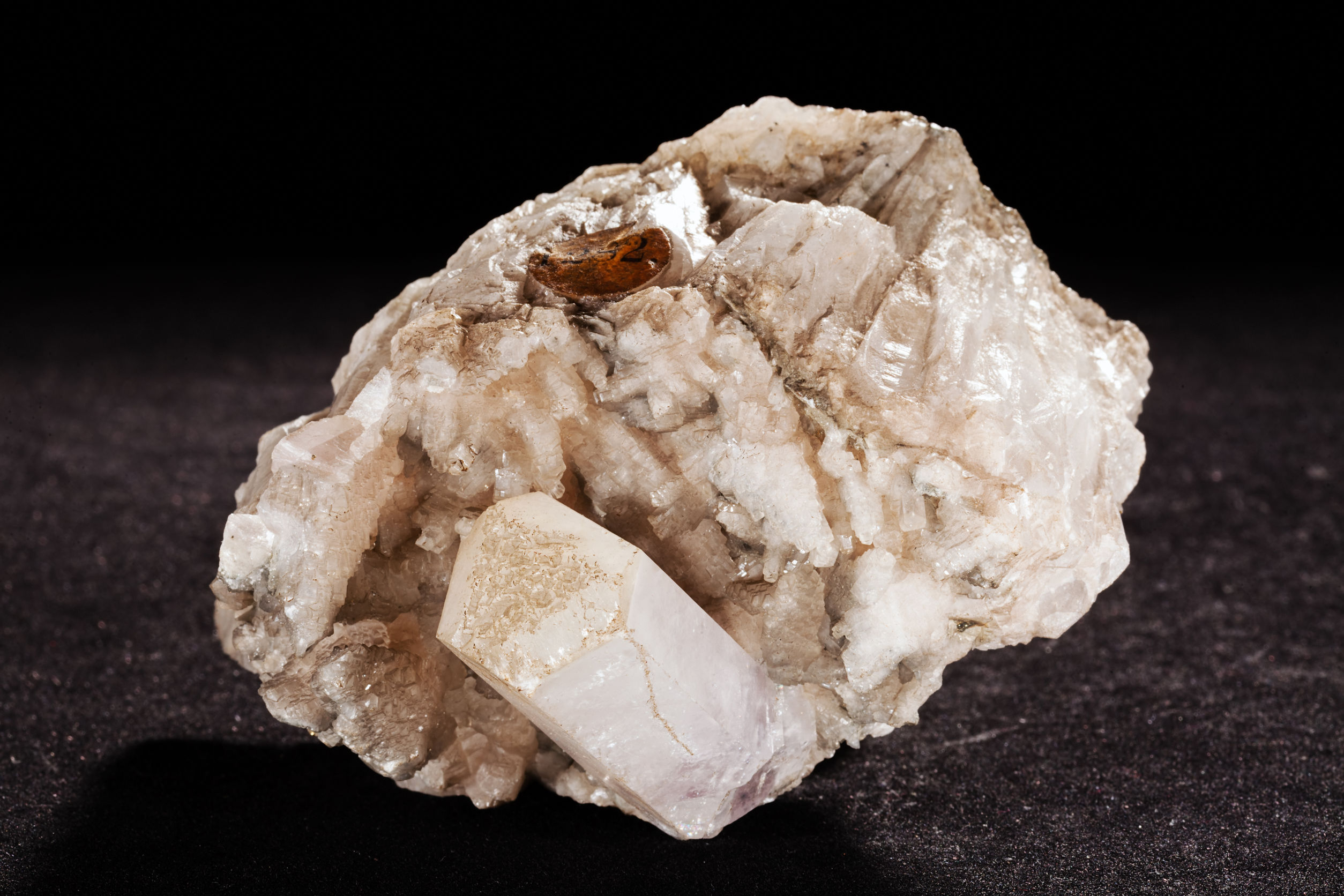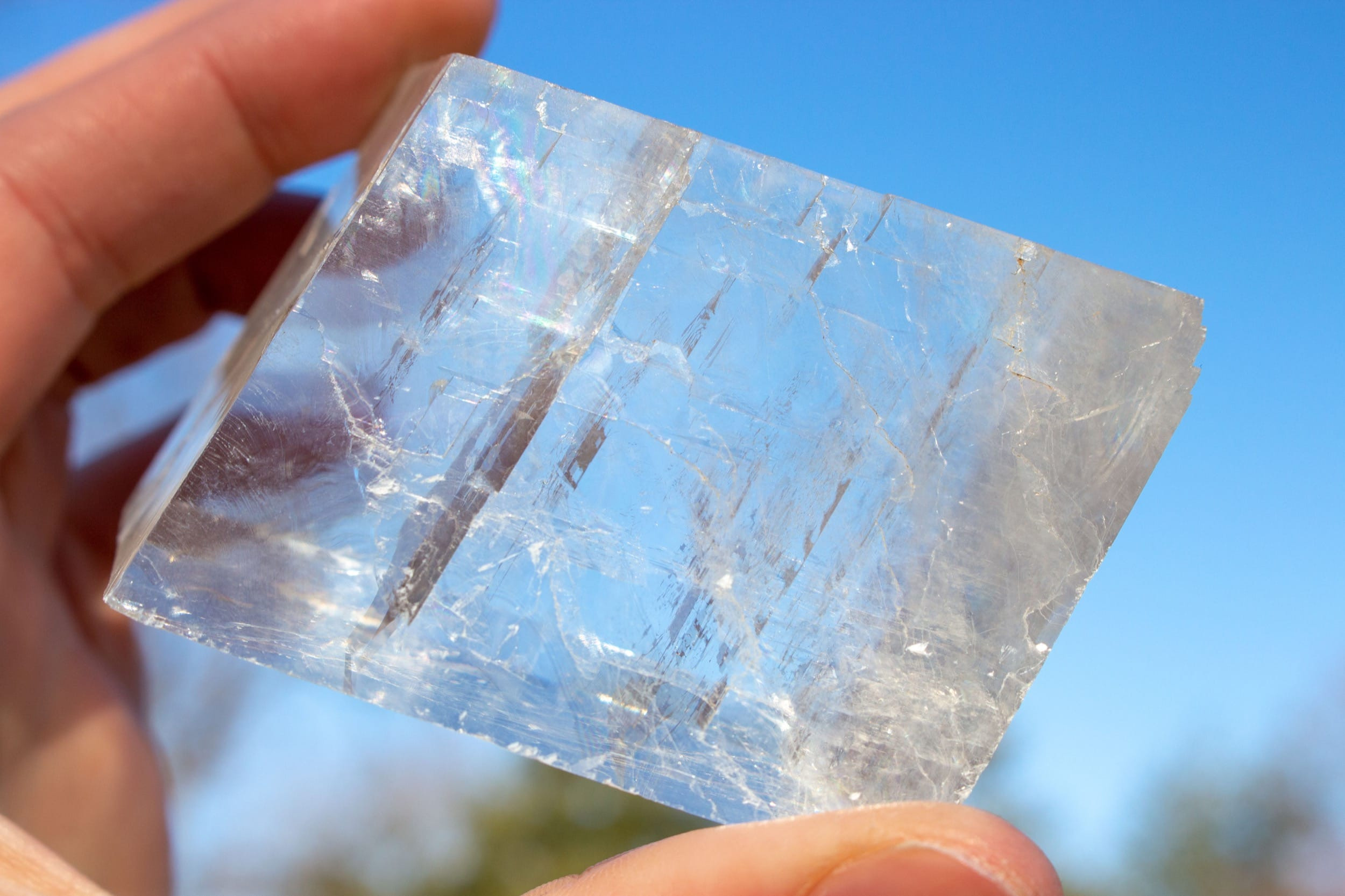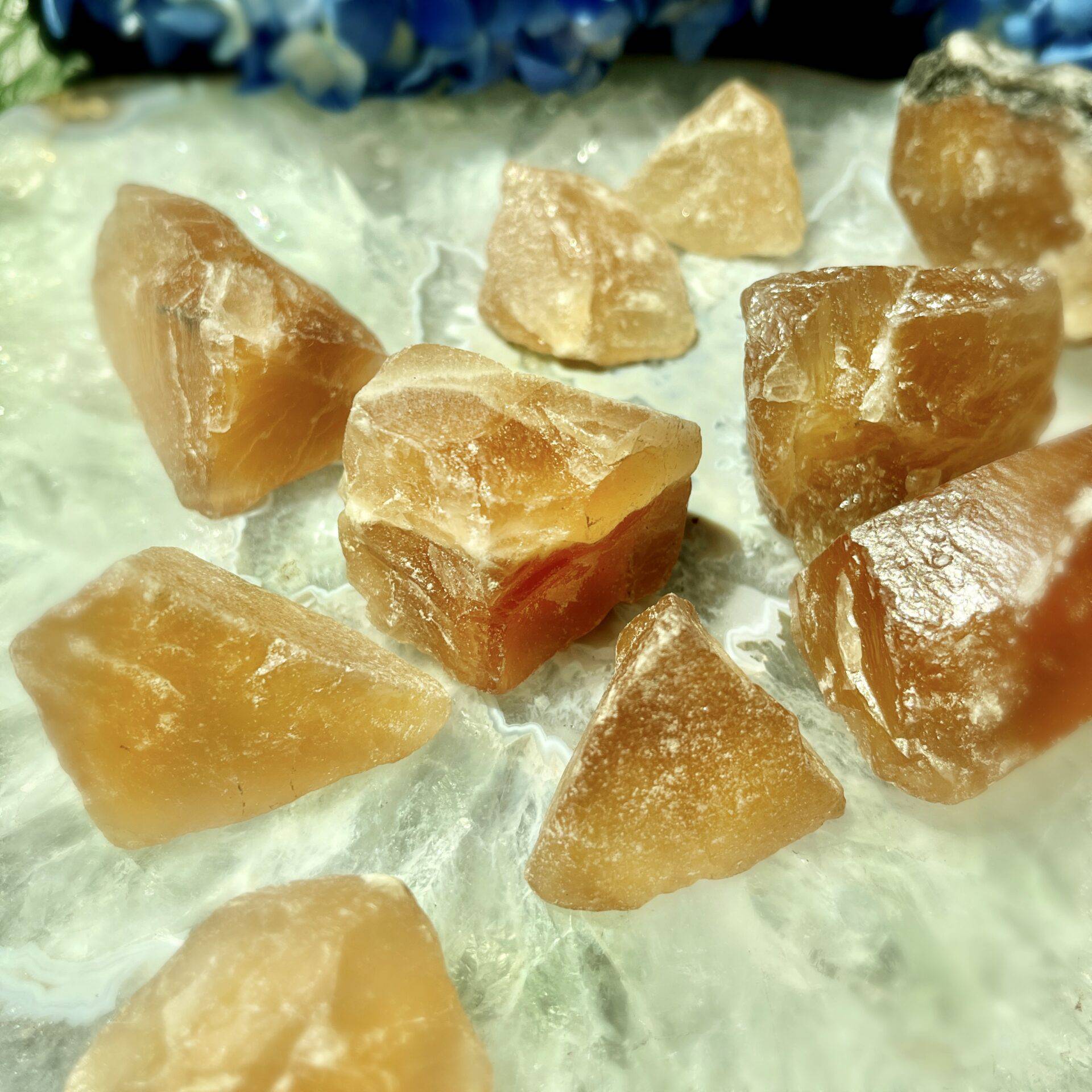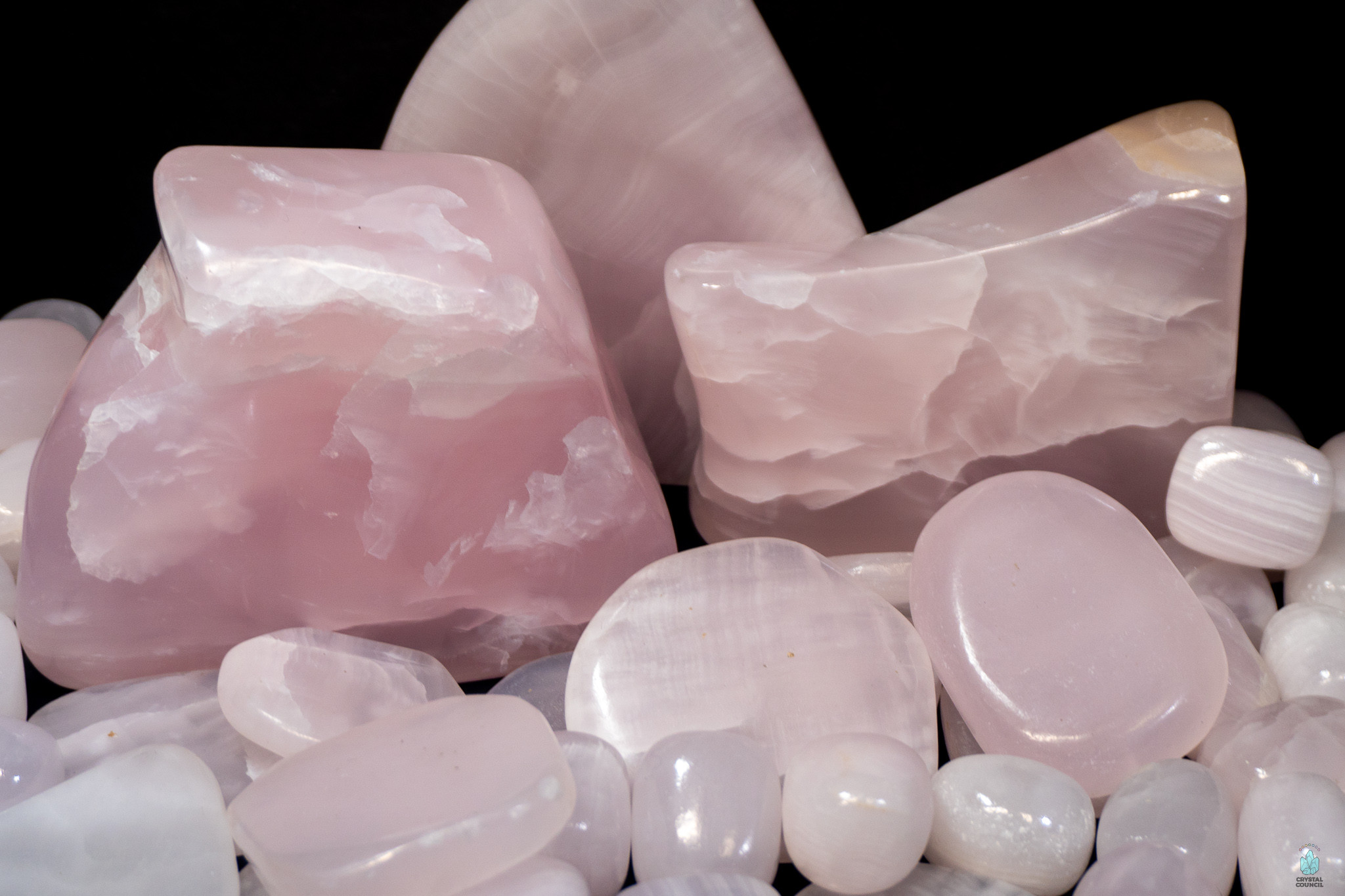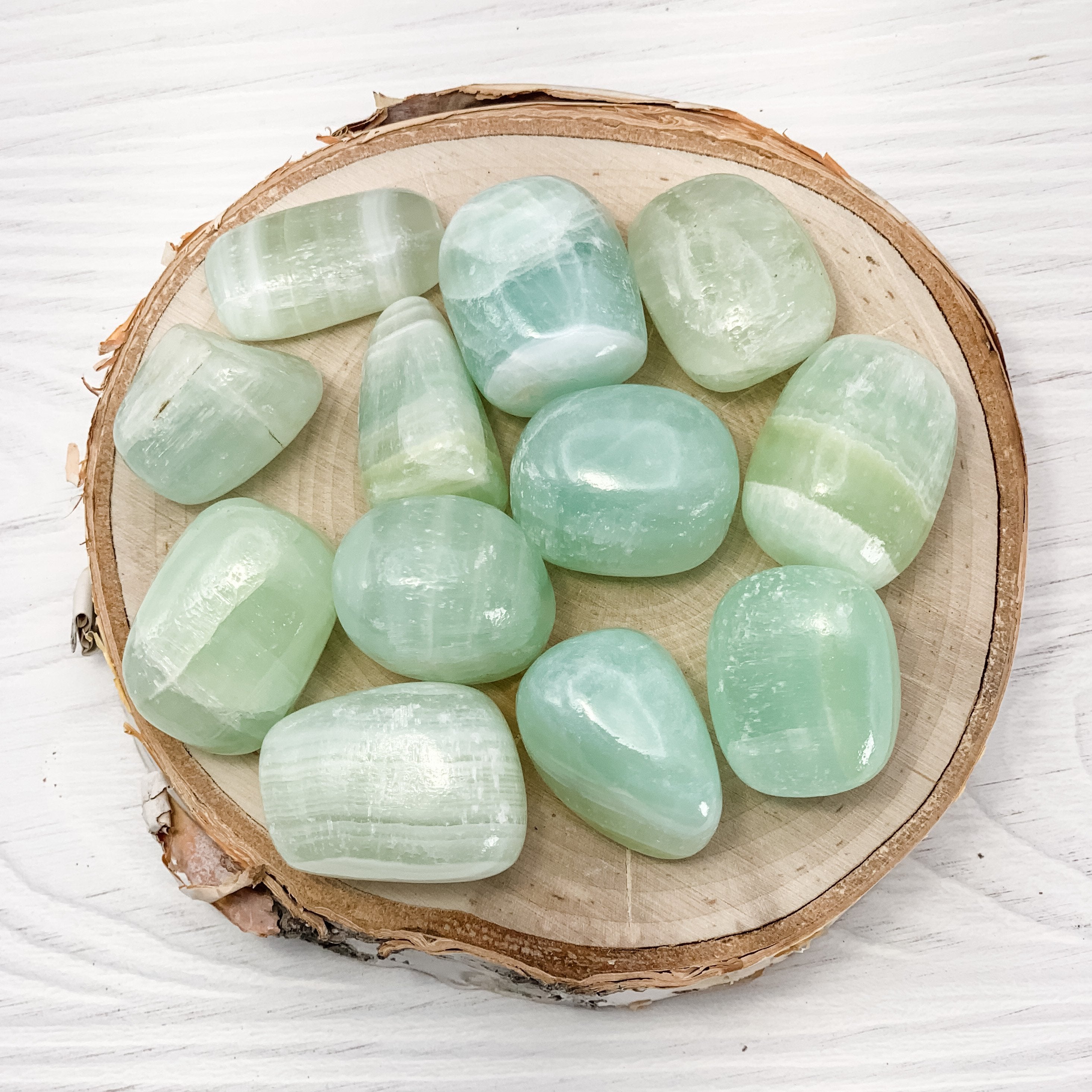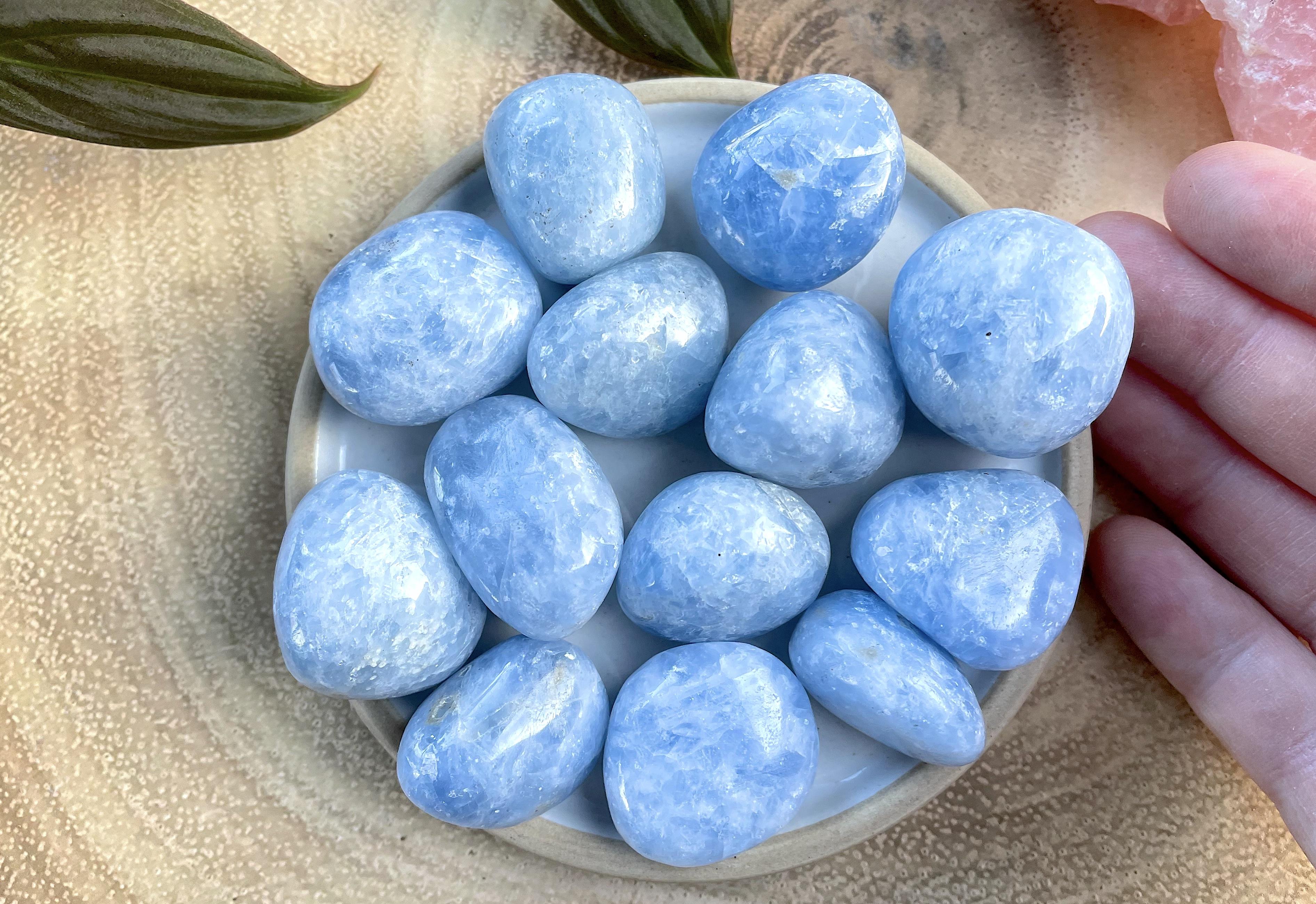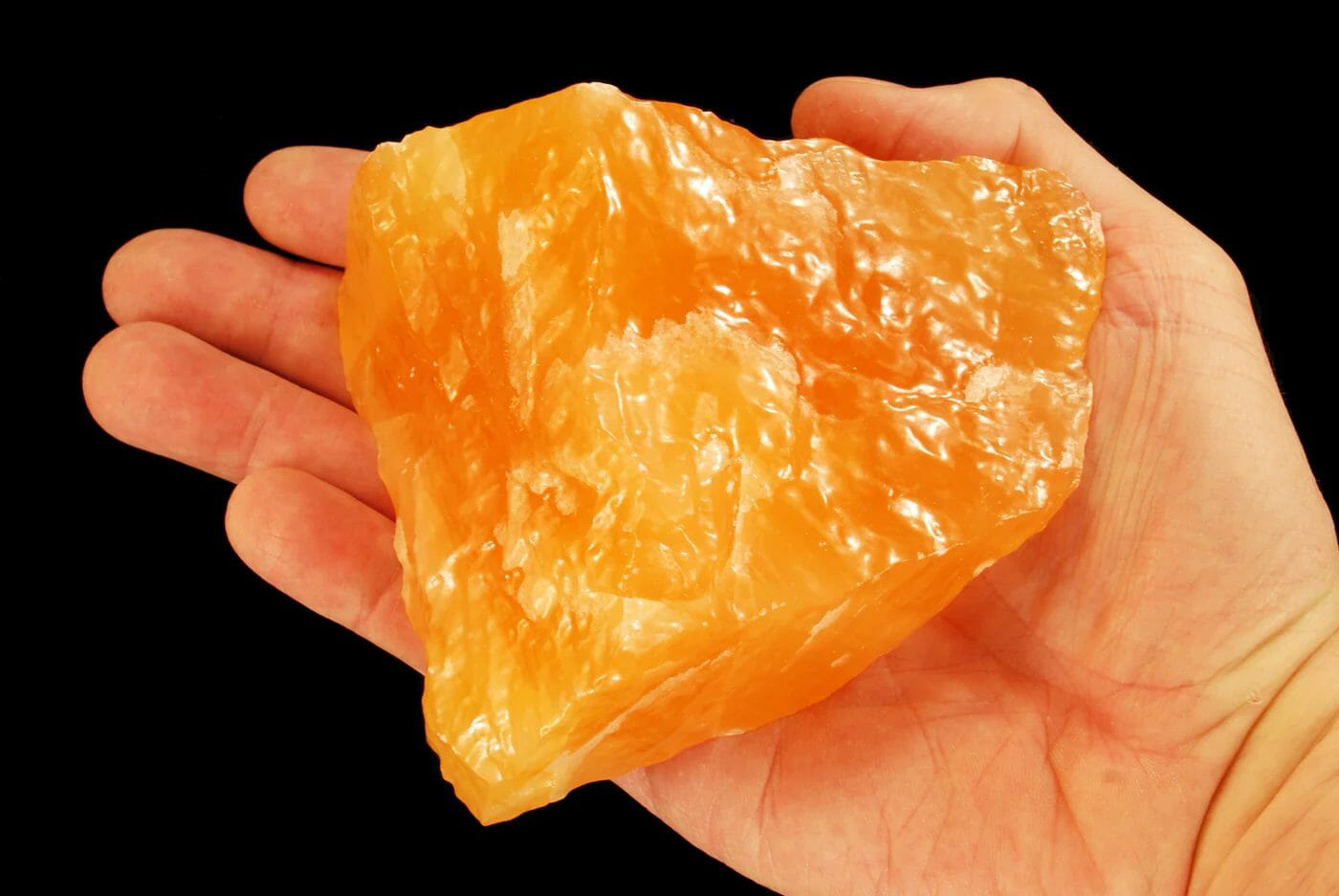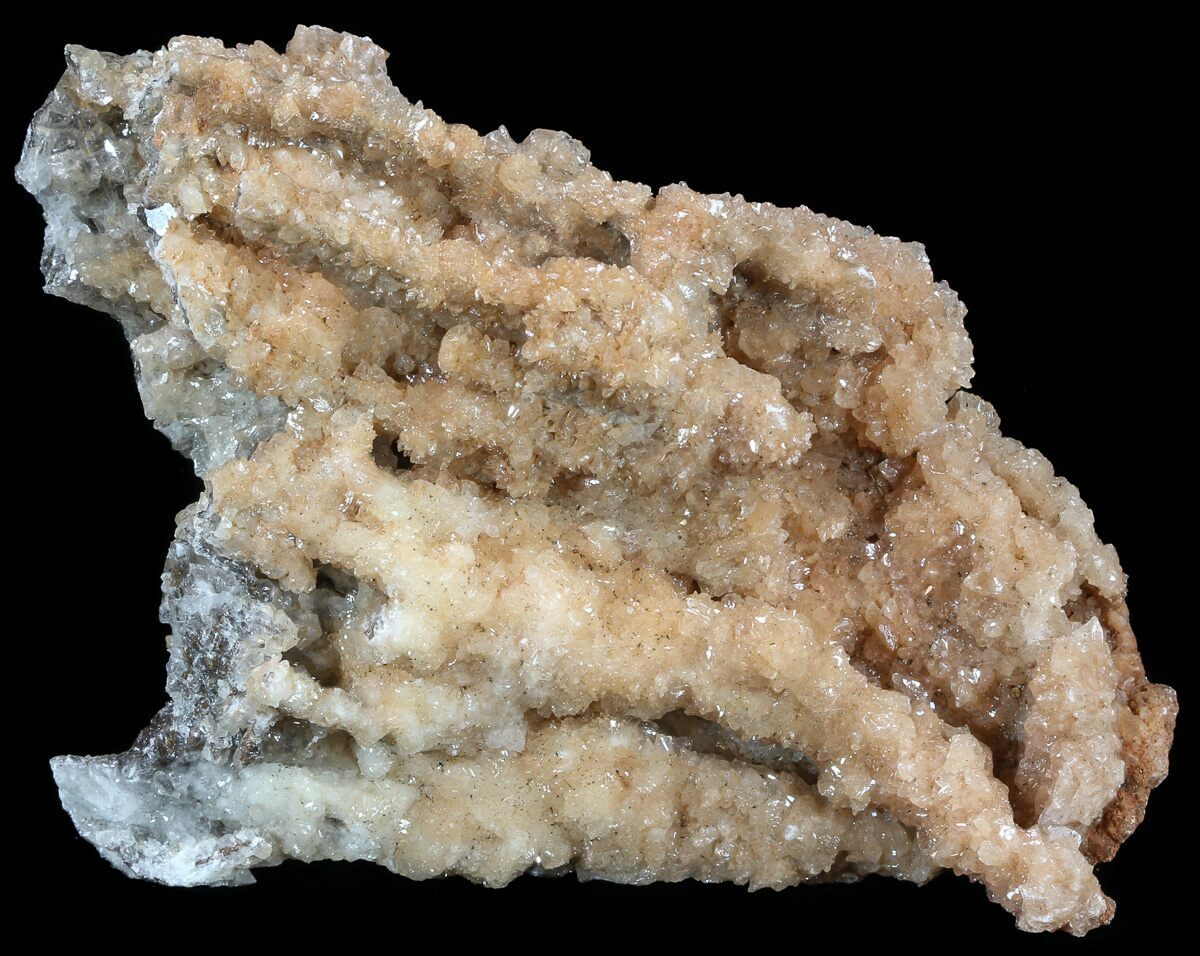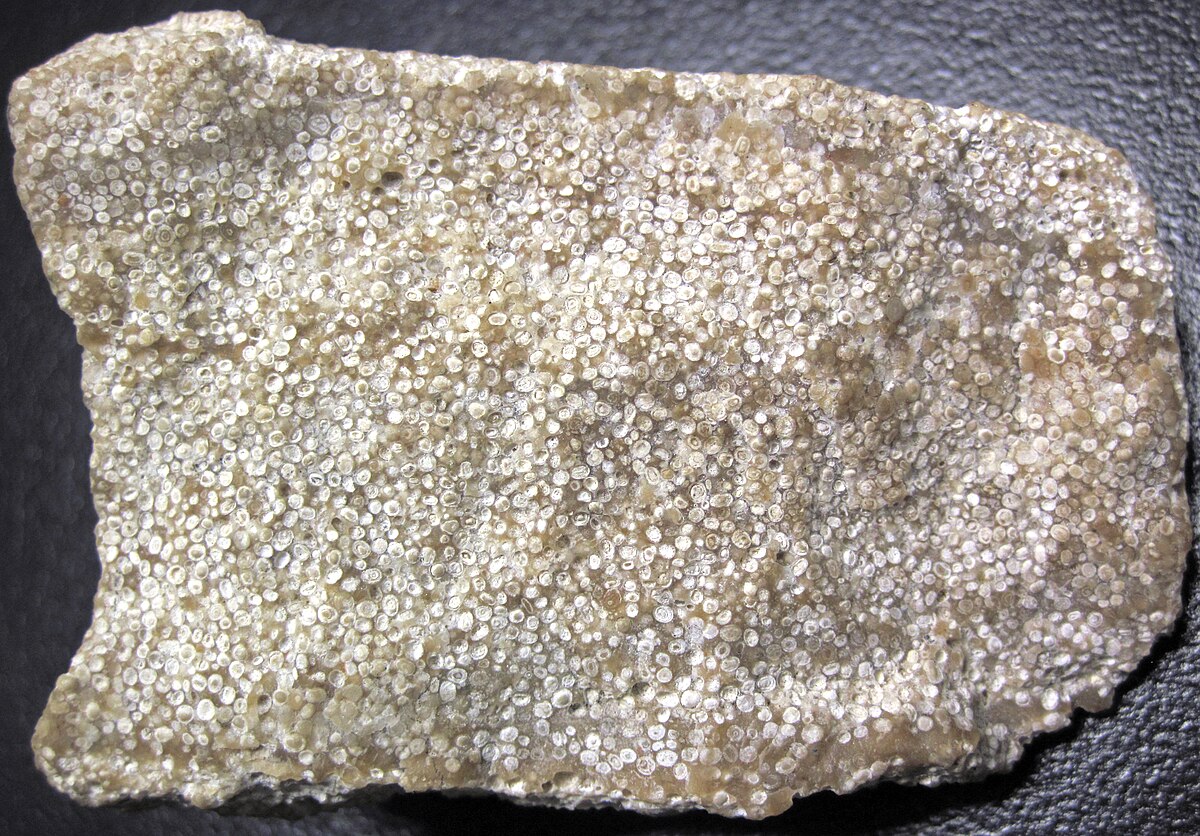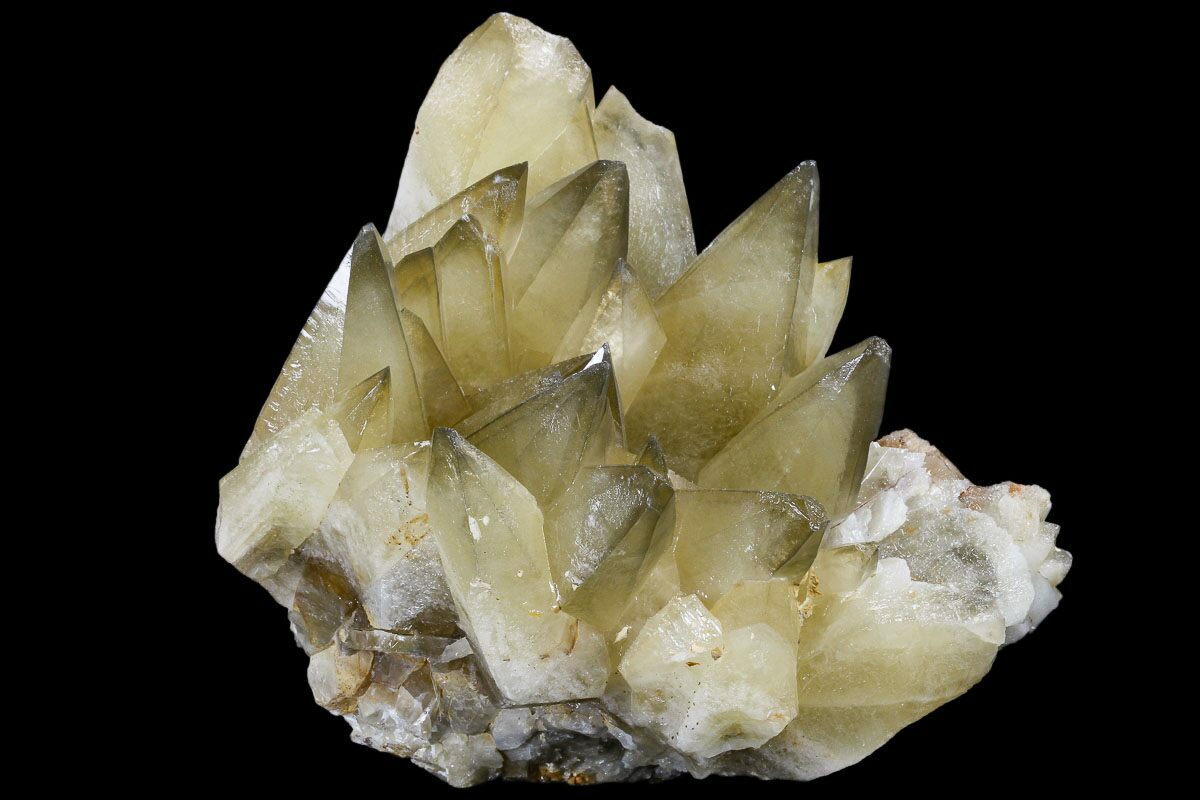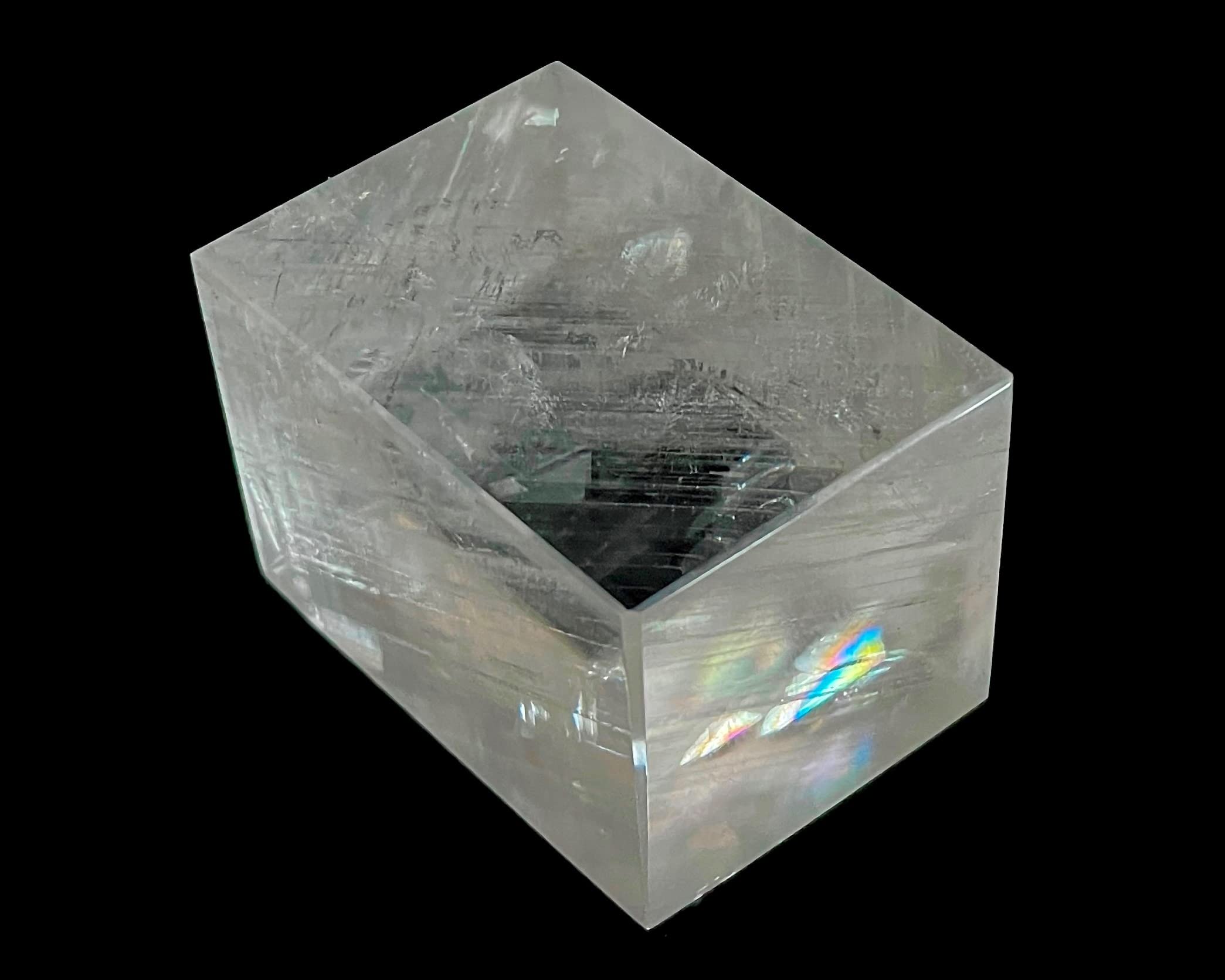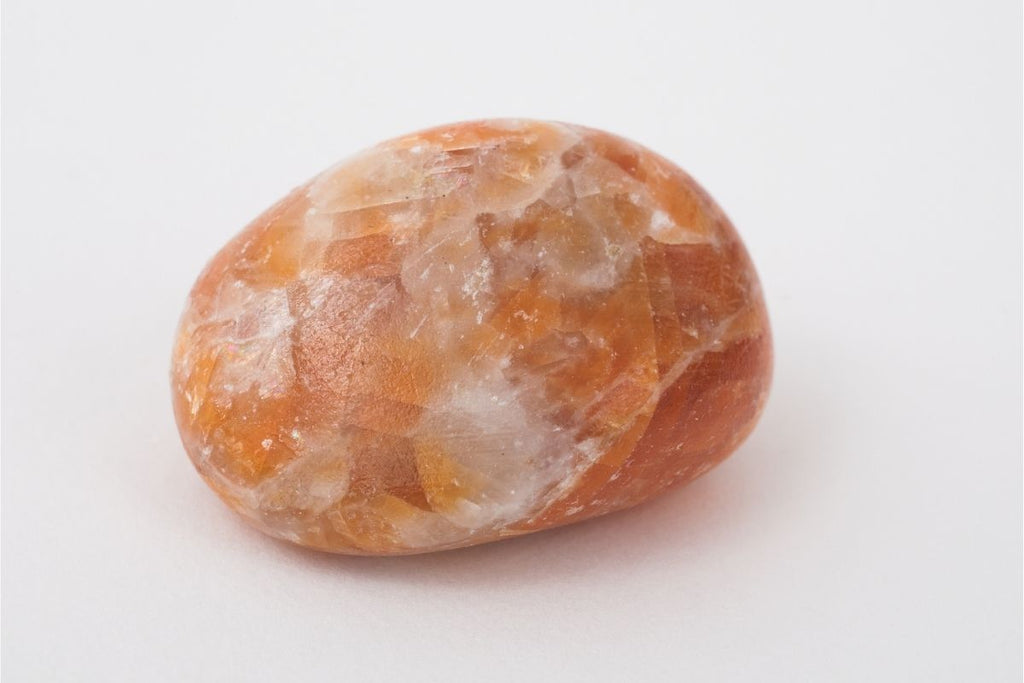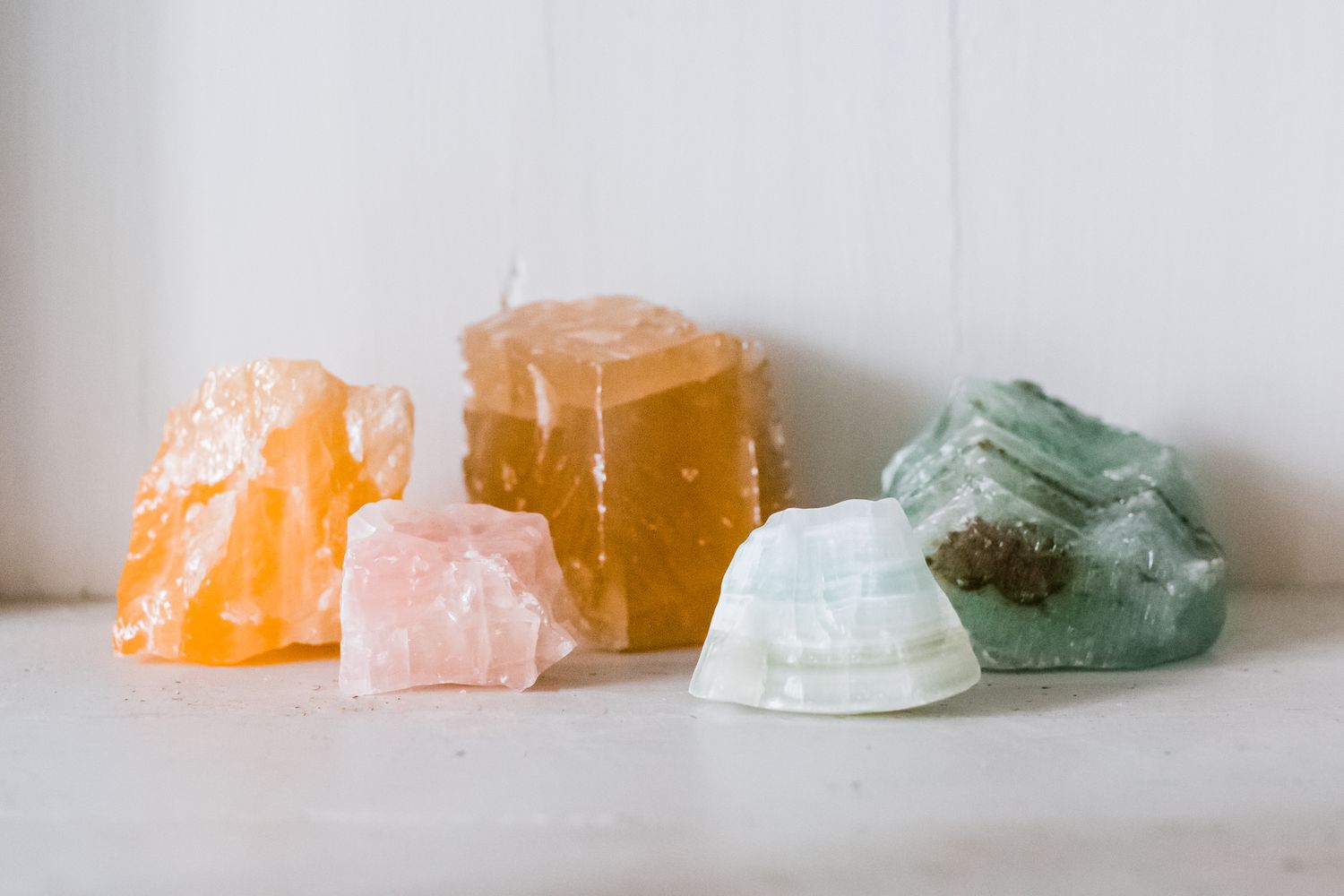
Calcite, a versatile mineral found abundantly in Earth's crust, comes in various forms and is utilized in numerous industries. From its role in construction to its presence in geological formations, calcite exhibits diverse characteristics that make it a valuable material. In this article, we will delve into the differentcalcite types, exploring their unique properties, applications, and geological significance.
What Is Calcite?
Calcite, found in volcanic rocks and seas, is one of the most prevalent carbonates. Calcite is the main mineral in marble and limestone, too. One of the most renowned calcite stones is Iceland Spar or Optical Calcite.
Refracting light twice makes this beautiful gem unique. That means what? This stone makes items underneath it in two locations. Cool trick, right? This rare mineral will captivate you and turn your attention everywhere!
These stones make stunning earringsand pendants. Best of all, calcite is cheap. Cheap calcite jewelryis available.
A Brief History Of Calcite
Let us discuss the short history of calcite.
Early Discoveries And Recognition
Calcite has a rich history datingback thousands of years. Early civilizations, including the Greeks and Romans, were familiar with this mineral. Its distinctive crystal forms and optical properties captured the attention of ancient scholars, although they needed a comprehensive understanding of its chemical composition.
Emergence Of Scientific Inquiry
During the Renaissance period, scientific inquiry into minerals and crystalsexperienced a significant resurgence. Scholars like Robert Boyle and Nicolaus Steno made pioneering contributions to the study of calcite, laying the foundation for modern mineralogy.
Calcite In Geological Understanding
In the 18th and 19th centuries, the field of geology saw substantial progress. Calcite played a pivotal role in the development of geological theories, especially concerning sedimentary rock formations. Notably, James Hutton's work on uniformitarianism relied heavily on observations of calcite-rich rocks.
Optical Advancements And Calcite
In the 19th and early 20th centuries, we witnessed a surge in interest in the optical properties of minerals. Iceland Spar Calcite, with its remarkable birefringence, became a focal point of research. This led to the development of polarizing microscopes and furthered our understanding of optics.
Calcite In Industry And Agriculture
As industrialization gained momentum in the late 19th century, calcite found applications in various sectors. Its use in cement production, water treatment, and agriculture became integral to these industries, driving demand for this versatile mineral.
Calcite In Modern Times
In the 20th and 21st centuries, technological advancements revolutionized the study and utilization of calcite. Sophisticated analytical techniques, such as X-ray diffraction and electron microscopy, allow for a detailed examination of calcite's crystal structure and composition.
Calcite In Contemporary Research
Today, calcite continues to be a subject of intense scientific scrutiny. Its role in climate science, especially in the study of stalactites and ooids, provides invaluable insights into Earth's past. Additionally, ongoing research explores innovative applications in fields like materials science and nanotechnology.
Cultural And Artistic Significance
Calcite's aesthetic appeal has not gone unnoticed by artists and artisans throughout history. Its presence in sculptures, carvings, and architectural elements attests to its cultural significance as a decorative and functional material.
Calcite - A Mineral Of Endless Potential
The history of calcite is a testament to humanity's evolving understanding of the natural world. From its early recognition by ancient civilizations to its integral role in modern industries, calcite's journey is one of continuous discovery and innovation. Today, this mineral stands as a symbol of the intersection between science, industry, and art.
10 Best Calcite Types
Determining the best type of calcite depends on the specific context and application. Every kind of calcite has its unique properties and characteristics that make it well-suited for particular uses. Here, we'll discuss the ten best calcite types of calcite and their respective strengths.
Iceland Spar Calcite
Iceland Spar Calcite, renowned for its high level of birefringence, is a transparent, colorless variety that has played a pivotal role in advancing the field of optics. It was historically used in the production of optical instruments.
Honey Calcite
Honey Calcite is characterized by its warm, golden hues. This variety is popular among collectors and is often used in jewelry and lapidary work. Its vibrant colors and unique, waxy luster set it apart from other calcite varieties.
Manganoan Calcite
Manganoan Calcite is a variety of calcite that contains manganese, which imparts a pink hue to the crystals. This striking coloration makes it a sought-after specimen among mineral enthusiasts and collectors.
Green Calcite
As the name suggests, Green Calcite is distinguished by its vibrant green coloration. This variety is often associated with emotional healing and is believed to promote a sense of renewal and vitality.
Blue Calcite
Blue Calcite is characterized by its serene blue hues. It is believed to have calming properties and is often used in meditation and spiritual practices. This variety is valued for its soothing and uplifting energy.
Orange Calcite
Orange Calcite is known for its bright, citrusy coloration. It is associated with creativity, positivity, and motivation. This variety is often used in crystal healingpractices to stimulate creativity and boost energy levels.
Stalactitic Calcite
Stalactitic Calcite refers to calcite formations that resemble icicles hanging from cave ceilings. These structures are created over thousands of years through the gradual accumulation of mineral-rich water drips.
Oolitic Calcite
Oolitic Calcite is composed of small spherical grains known as ooids. These calcite-rich grains accumulate in layers over time, forming distinctive sedimentary rocks called oolite.
Dogtooth Calcite
Dogtooth Calcite is characterized by its sharply pointed, elongated crystal formations. The crystals often resemble the shape of dog teeth, hence the name. Collectors highly value this variety for its unique and aesthetically pleasing appearance.
Lime Spar Calcite
Lime Spar Calcite, also known as chalk, is a soft, white variety of calcite. It is commonly used in industries such as agriculture, construction, and manufacturing. Chalk has been historically used for writing and drawing.
These ten varieties of calcite types showcase the diverse range of colors, formations, and properties that make this mineral a fascinating subject for collectors, researchers, and enthusiasts alike. Every kind of calcite offers unique characteristics and applications, contributing to the mineral's significance in various fields.
The Spiritual Significance Of Calcite Types
Let us discuss the spiritual significance of calcite types.
Clear Calcite - Enhancing Clarity And Amplifying Energies
Clear calcite is associated with clarity of thought and intention. It is believed to amplify energy and facilitate the flow of positive energies throughout the body. This variety of calcite is often used in meditation practices to promote mental clarity, focus, and spiritual insight.
Green Calcite - Promoting Heart-Centered Healing And Growth
Green Calcite is associated with the heart chakra and is believed to promote emotional healing and growth. It is thought to facilitate a deeper connection with nature and promote feelings of compassion, love, and empathy. Green Calcite is often used in energy healing practices to release emotional blockages and promote a sense of well-being.
Blue Calcite - Calming And Soothing The Mind And Emotions
Blue Calcite is associated with the throat and third-eye chakras, making it a powerful stone for communication and intuition. It is believed to calm the mind, reduce anxiety, and enhance one's ability to express oneself. Blue Calcite is often used in spiritual practices to enhance psychic abilities and promote a sense of inner peace.
Orange Calcite - Igniting Creativity And Motivation
Orange Calcite is associated with the sacral chakra and is believed to stimulate creativity, motivation, and passion. It is thought to energize the body and mind, making it an excellent stone for those seeking inspiration and drive. Orange Calcite is often used in meditation and manifestation practices to amplify one's creative potential.
Manganoan Calcite - Fostering Unconditional Love And Self-Acceptance
Manganoan Calcite, with its pink hues, is associated with the heart chakra and is believed to promote unconditional love, self-acceptance, and emotional healing. It is thought to help release past traumas and open the heart to new experiences and connections.
Honey Calcite - Encouraging Personal Power And Confidence
Honey Calcite is associated with the solar plexus chakra, which governs personal power and confidence. It is believed to boost self-esteem, courage, and motivation. Honey Calcite is often used in energy work to enhance one's sense of self-worth and empower them to take positive action.
Red Calcite - Grounding And Energizing The Root Chakra
Red Calcite is associated with the root chakra and is believed to provide stability, grounding, and vitality. It is thought to enhance physical energy, endurance, and a sense of security. Red Calcite is often used in meditation practices to anchor oneself in the present moment.
Stellar Beam Calcite - Connecting To Higher Realms And Cosmic Energies
Stellar Beam Calcite is believed to have a solid connection to higher realms and cosmic energies. It is associated with spiritual awakening, enlightenment, and accessing higher states of consciousness. This rare and unique variety of calcite is often used in advanced meditation and energy work.
Amplifying Intentions With Calcite
Regardless of the specific type, calcite is often used as an amplifier of intentions and energies. It is believed to enhance the effectiveness of other crystals and spiritual practices, making it a valuable tool for those on a spiritual journey.
It's important to note that the spiritual significance of crystals and minerals is based on belief systems and should not replace professional medical or psychological advice or treatment. If you have a medical or psychological condition, seek the advice of a qualified healthcare professional.
Tips For Cleaning Calcite Crystals
- Start with gentle cleaning.
- Calcite crystals are attractive, but they may get dusty or discolored with time. A careful approach to calcite crystal cleaning works best. When carefully cleaning calcite crystals, remember these tips.
- Brush dirt and debris using a soft brush.
- Put the crystals in a basin of lukewarm water with a few drops of mild soap.
- Brush crystals gently to remove dirt and stains.
- Clean the crystals and air-dry them.
Gentle Soap And Lukewarm Water
- Calcite crystals are cleaned well with mild soap and lukewarm water.
- This soft, non-invasive approach preserves calcite crystals.
- Most calcite may be cleaned with mild soap and lukewarm water without damaging fragile crystals.
- Lukewarm water loosens dirt and debris, making crystal cleaning simpler.
Moving On To More Advanced Methods
- If mild cleaning fails, try more sophisticated procedures. Cleaning calcite crystals with vinegar and water works well. Note these important points:
- Mix equal amounts of vinegar and water in a bowl.
- Let the calcite crystals soak in the basin for a few minutes.
- Use a gentle brush to scrape crystals.
- Clean the crystals and air-dry them.
Solution Of Vinegar And Water
They were cleaning calcite crystals with vinegar and waterworks.
Stains and grime on calcite crystals dissolve with vinegar.
This cleaning procedure works for harder stains that light soap and lukewarm water cannot remove.
Consider Polishing Kits
- If the vinegar and water treatment fails, try a polishing kit. Benefits and concerns before using a polishing kit.
- Calcite crystals may sparkle like new using a polishing kit.
- Polishing kits may only work for some calcite crystals.
- Polishing kits may harm fragile crystals, so use them carefully.
While cleaning calcite crystals may seem overwhelming, it may be easy with the appropriate methods. Start with mild cleaning and progress to more aggressive treatments if needed. To protect your gems, use a polishing kit carefully.
Zodiac Birthstone
Calcite is a fantastic complement for people born under the flag of the Cancer zodiac sign. The crab sign is incredibly adorable and might come with a bit more sensitivity than some of its companions.
Calcite assists individuals in adjusting to events without becoming trapped in the net of emotions. Of course, it's vital to experience all your sentiments in order to process them, but calcite enables you to take a big breath and process them without dwelling too long on ideas that are not benefiting you. It allows you to navigate through the world without feeling like you may burst with delight rather than feeling like a bruised peach.
Calcite Types - FAQs
How Do Humans Use Calcite?
Building material, abrasive, agricultural soil treatment, construction aggregate, pigment, medicinal, and other uses. Its uses are more significant than most minerals.
Why Do We Need Calcite?
These rocks are widespread and make up most of Earth's crust. The characteristics of calcite make it a popular mineral. It is a building material, abrasive, agricultural soil treatment, aggregate, pigment, medicinal, and more.
Is Calcite Good For Health?
Calcium is needed for muscle movement and nerve communication between the brain and body. Calcium also helps blood veins circulate blood and releases hormones that impact various physiological processes. Vitamin D aids calcium absorption.
What Is The Spiritual Significance Of Different Calcite Types?
Different calcite types hold various spiritual meanings. For instance, Green Calcite is associated with heart-centered healing, while Clear Calcite is believed to enhance mental clarity and amplify energies. Each type carries its unique properties and significance in spiritual practices.
In What Industries Is Calcite Commonly Used?
Calcite finds extensive applications in construction (cement production), water treatment (neutralizing acidic water), and manufacturing (glass, paints, plastics). It's a versatile mineral with wide-ranging industrial significance.
Conclusion
The diverse array of calcite types showcases the remarkable versatility and significance of this mineral. From the transparent brilliance of Iceland Spar Calcite to the warm hues of Honey Calcite, each variety possesses unique properties and applications. Calcite's presence in various industries, its role in geological formations, and its spiritual significance underscore its wide-ranging impact on our world.
As we continue to explore and appreciate the myriad facets of calcite, it remains a captivating subject of study and a valuable resource for numerous fields. The enduring legacy of calcite types serves as a testament to the enduring curiosity and ingenuity of humanity in unlocking the secrets of the natural world.
